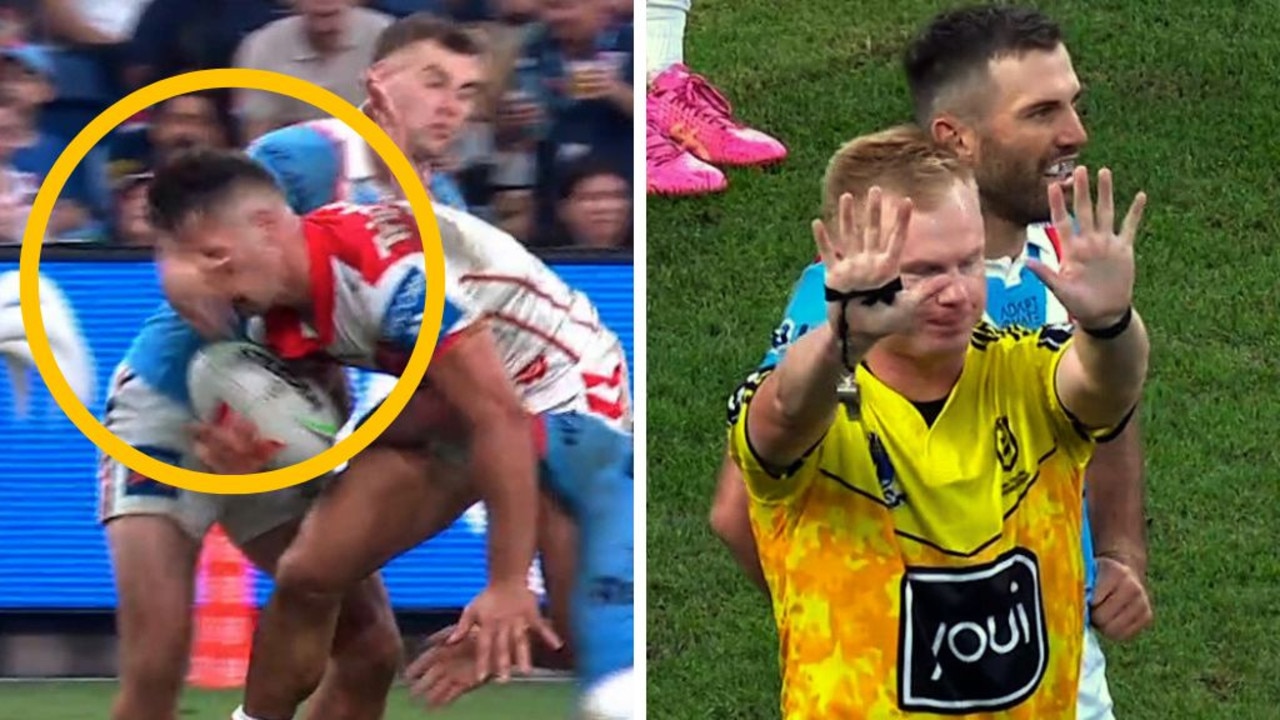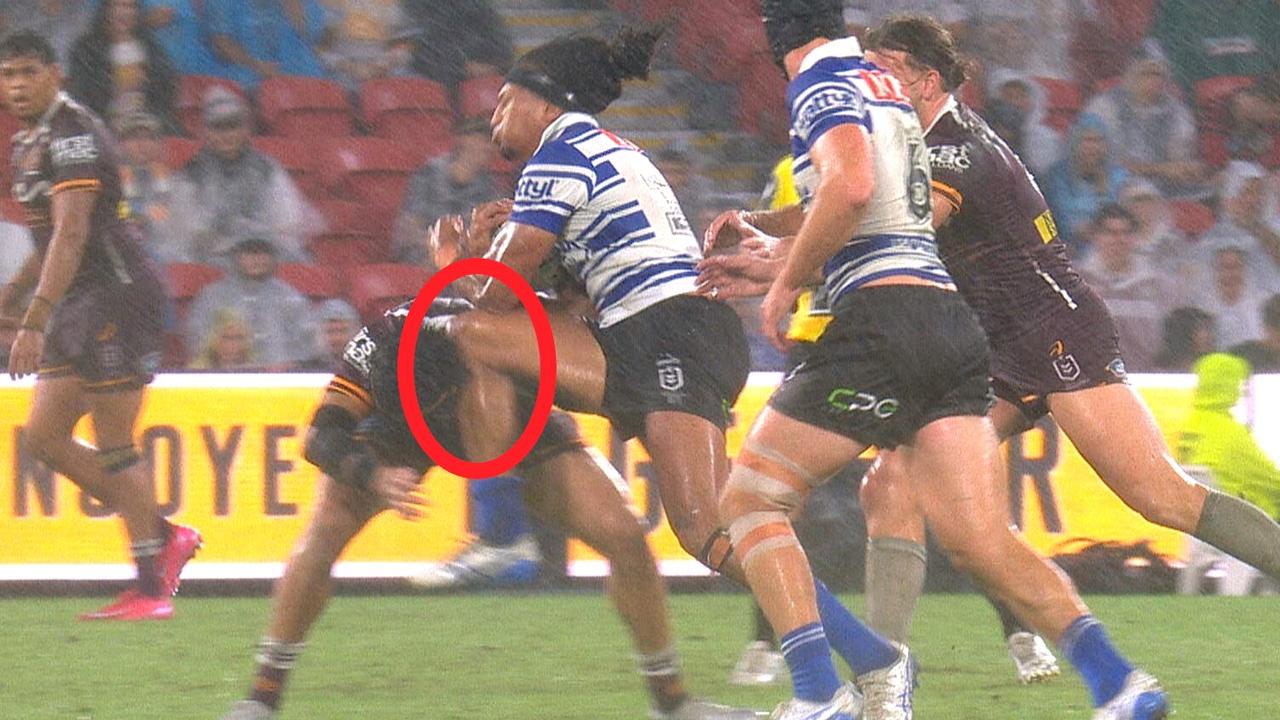Why NRL needs to rethink its approach to junior development after concussion revelations
DOES the NRL need to change its approach to junior development following further revelations of the damages of concussion?
NOBODY was born with a tougher chin than Martin Lang and nobody set out to prove this fact more often.
Lang almost challenged the defence the way he ran toward them and, in the spirit of a true contest, many lined up to take their shot.
So it follows that Lang, his bravery never questioned, got knocked out somewhere in the vicinity of a dozen times over his NRL career.
Yet somehow he survived all of that to move into medical sales with considerable success.
This is encouraging. Lang is a rugby league purebred. His father John Lang was Queensland’s hooker in the first State of Origin game and he became a premiership-winning coach.
Martin followed with eight Origin games and a premiership himself and in his time was the game’s greatest warrior.
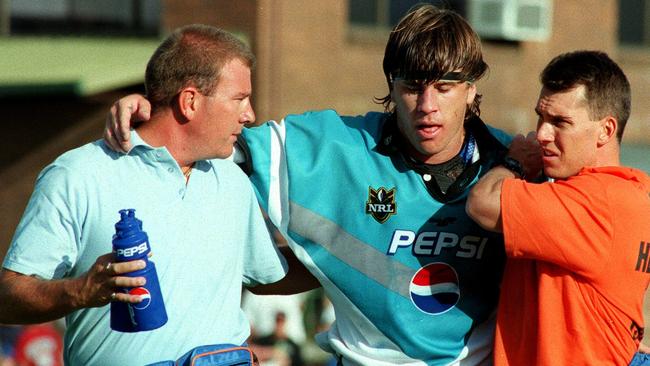
Yet Martin Lang is the face of the new dilemma in rugby league, the small thought soon to become a big conversation.
Why would anyone encourage their child to play the game anymore?
On Thursday, Lang posted a warning on his LinkedIn profile after the ham-fisted handling of the Sia Soliola tackle on Billy Slater.
He wrote players of the past were not protected enough against deliberate foul play, a case made clear because there was no true deterrent in their penalty. The inference was subtle but clear.
“I personally would not encourage any person, male or female, to participate in contact sports, particularly rugby league, over the age of sixteen,” he wrote.
“As research has shown, the consequence of such involvement have in many cases proven catastrophic.”
This is a man with memory.
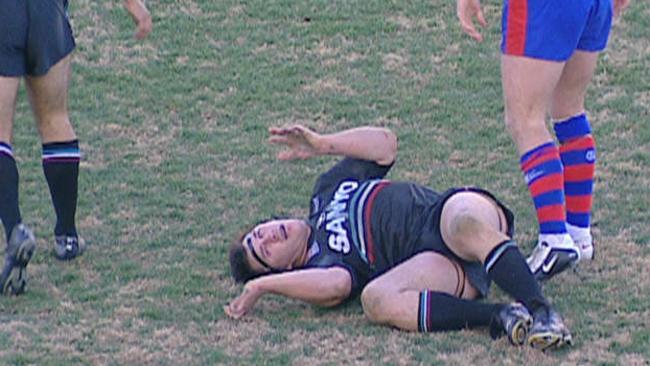
And he speaks to the new conversation in rugby league.
His advice followed disturbing research from America on the prevalence of the degenerative brain disease chronic traumatic encephalopathy (CTE) published this week in the Journal of the American Medical Association. Dr Ann McKee, a neuropathologist and director of Boston University’s CTE Centre, examined 202 brains of dead American football players.
The numbers are terrifying. Of the 111 former NFL players tested, 110 suffered CTE.
Now before we begin wrapping our tender young in cotton wool, Dr McKee warned there was a selection bias in the results. In the same period those 111 men died, a total of 1300 former NFL players also died but their brains were not cut up and spliced for public consumption, the point being that many families of the dead men in the test group donated the brains because they had shown symptoms of CTE.
So the average was expected to be higher.
Yet, even if the 110 men found with CTE were the only men of the 1300 ex-players to suffer the disease, which is highly unlikely, it represents about nine per cent, a number still significantly higher than average.
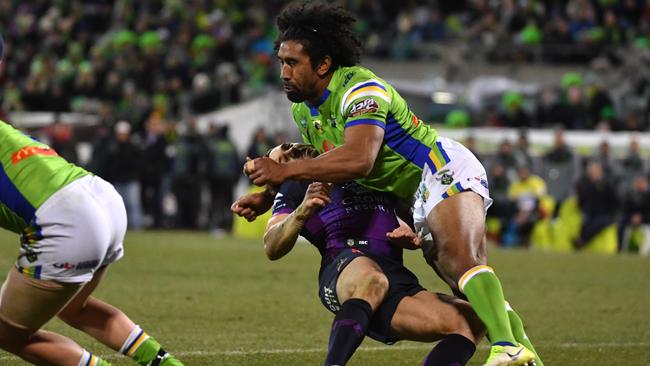
The study was bad timing for rugby league. It came days after Soliola fronted the judiciary and where, on top of the ugliness of the tackle, we learned Slater had lost two weeks of memory. Whatever he recalls of that famous Origin III victory he will now have to do so through video.
It leaves the NRL a simple problem.
How does it encourage parents to let their children play football knowing this might be their fate?
The Slater tackle was an aesthetic nightmare, partially saved by Soliola’s eloquent pledge to repair the damage he caused. He is a fine man.
But Martin Lang’s frustration is not his alone.
Recently, NRL doctor Paul Bloomfield headed to Ireland for an international conference on concussions. The NFL was there, faced with similar problems.
The problem is broader for the NRL. The game’s history is for young children like Martin Lang once was to begin playing the game with hopes they might even make it all the way to being a professional. Kids walk away from the game only when the dream dies.
The entire game markets junior footy toward playing NRL. And who wants that now?
PLAY ON: Coote urges parents to let the kids play
LATE MAIL: Who’s in, who’s out?
And so participation rates are in decline. What mother sends their kid out for this if the result is his brain becomes oatmeal?
NRL boss Todd Greenberg has recognised the problem and the need for the game to offer safe alternatives for children. To find and recognise a distinction between participation and those driven to play NRL.
The game’s very future might depend on it.
The NRL concedes that what drives the game on television, the big hits and collisions, is difficult to sell in the age of “helicopter parenting”.
It will mean a complete overhaul of the NRL’s thinking.
“Everyone thought it was a great idea to bring it all under the one banner of the NRL,” Greenberg said.
“I don’t think that will be the best delivery for the next phase.
“I think once we look at the participation study and the outcomes out of that we will have a different picture at the base of the pyramid than at the top.”
Greenberg is searching for safer versions, in line with touch and OzTag. The game will move to distance junior rugby league from being so closely linked to the NRL. The game’s head of football, Brian Canavan, is charged with delivering recommendations by October.
“In time for next year,” Greenberg said.
LEAGUE CENTRAL PODCAST: David Riccio, Paul Suttor and Christian Nicolussi discuss Sia Soliola’s ban, the trouble with refs and whether Paul Gallen is the greatest Shark of all
The game missed an opportunity to show its intent through its tardy handling of the Soliola tackle. It prompted Lang’s warning.
Still, the game is working at improving.
Wests Tigers forward Joel Edwards failed a head injury assessment two weekends ago and did not make it back to the field and then missed the Tigers game against Parramatta. He passed his assessment this week, clearing him to play.
The NRL overruled the Tigers and made Edwards rest at least another week. It is tough for young men, still invincible.
One day Edwards will understand.
***
THE transient nature of NRL football is there for all to see on Saturday afternoon when Josh Dugan runs out for his 150th game against Newcastle.
In the No. 3 jersey.
Dugan was in the middle of a well-fought dispute with his club earlier this year when he insisted he was a fullback, not a centre, and therefore should be paid fullback money in contract negotiations.
Dugan had the support of his coach, Paul McGregor, who was playing him at fullback and said he considered him a fullback, but not the support of recruitment boss Ian Millward. Who considered him a centre.
Millward won and Dugan promptly signed with Cronulla. Where he will most likely play centre.
McGregor is too busy getting the Dragons back on track to play mind games and will play Dugan at centre to accommodate the inspired debut of Matt Dufty and the injury to centre Euan Aitken.
McGregor speaks to the simple truth of football. You pick the best players available and find a place for them.
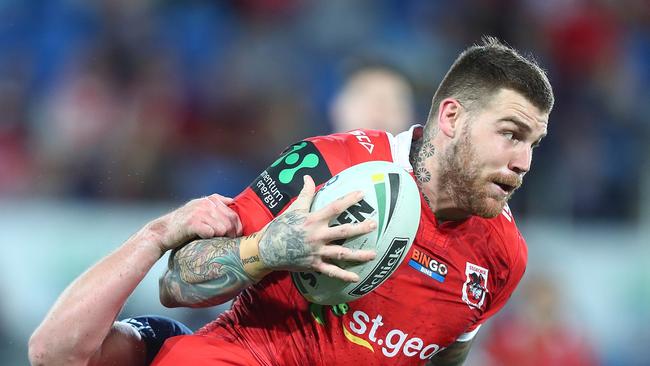
***
PLENTY of good suggestions have arisen for how avoid last week’s mistake when Sia Soliola failed to get sent off for his tackle on Billy Slater.
All make sense in some way — but all fail to address the root problem.
Human error.
The referees should have sent Soliola off, but failed. The video referee got involved and should have tipped to the referee, but failed.
Any safeguard you care to suggest won’t protect against human error, driven here by a lack of confidence in our decision makers, and will simply add more layers of bureaucracy.
Let’s empower the referees. Let’s make the game simpler, not harder.
Increasingly difficult interpretations is what has got us here in the first place.
Originally published as Why NRL needs to rethink its approach to junior development after concussion revelations

